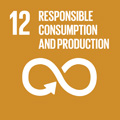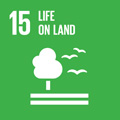- Docente: Ilaria Filippetti
- Credits: 6
- SSD: AGR/03
- Language: Italian
- Teaching Mode: In-person learning (entirely or partially)
- Campus: Cesena
- Corso: First cycle degree programme (L) in Viticulture and Enology (cod. 8527)
-
from Sep 15, 2025 to Dec 18, 2025
Learning outcomes
The course will providing the basic knowledge on the main topics of wine grape and on grapevine structures and functions, on the developmental processes and the annual cycle and their interaction with soil, climatic and management factors. Moreover the students will acquire the knowledge on vine propagation, clonal selection and on the legislation concerning grapevine certification and they will be able to choose among national and international grapevine varieties and roostocks.
Course contents
Prerequisites
Students enrolling in this course are expected to have a solid background in the fundamentals of general arboriculture.
The course consists of 9 teaching units covering the following topics:
1. ORGANOGRAPHY
Understanding the botanical classification of the species and its economic importance. Knowledge of vine organography. Description of the main vine organs. Botanical classification of the vine, distribution, and economic significance. Root system and aerial parts: origin and anatomy. Structure of dormant buds, shoots, canes, leaves, tendrils, inflorescences, clusters, berries, and seeds. Practical exercises on plant organography.
2. BUD CYCLE
Acquisition of knowledge about the annual cycles of the vine.
Understanding the basic principles regulating the vegetative and reproductive growth phases of the vine. Vegetative sub-cycle: dormant buds, bud break, shoot growth, bud development, and conditioned dormancy. Reproductive sub-cycle: flower induction (factors involved), flowering, pollination, fertilization, micro- and macrosporogenesis, fruit set, and developmental anomalies of flowers and berries. Practical exercises: observations through cross-sections of dormant buds and canes.
3. PHYSIOLOGICAL ASPECTS
Understanding the main physiological mechanisms underlying the vine production cycle.
Basic knowledge to understand the effects of different cultivation techniques. Photosynthesis in relation to environmental and endogenous factors. Photosynthetic response of leaves to changes in light intensity, temperature, and water availability. Photosynthetic response according to leaf age and position on the fruiting cane. Mechanisms of water and carbohydrate absorption and transport. Movement of photosynthates among plant organs at different stages of the vegetative cycle. Source–sink relationships.
Practical exercises: observations and use of instruments to measure photosynthetic activity and vine water content.
4. BERRY RIPENING
Understanding the growth dynamics of berries.
Knowledge of the evolution of the main biochemical components of berries with reference to factors influencing their concentration at harvest. Growth phases of berries, effects of hormones on berry growth, veraison phase, and berry water balance pre- and post-veraison.
Main classes of berry compounds during ripening and their localization and evolution: sugars, organic acids, main classes of phenolic compounds (anthocyanins, tannins, flavonols), and aromatic compounds.
5. METHODS FOR IDENTIFICATION OF VINE SPECIES, VARIETIES, AND CLONES
Acquisition of skills to identify and apply the most appropriate methods for varietal recognition and to understand and evaluate the national and international grapevine heritage.
Descriptive methods: OIV ampelographic sheets. Biochemical methods: isoenzymes and analysis of anthocyanin and aromatic compounds—their potentials and limitations. Basics of statistics applied to varietal and clonal identification. Molecular methods: application of molecular markers for varietal and clonal identification—their potentials and limitations.
Practical exercises: research on varietal descriptive traits using various online databases. Cases of synonymy and homonymy.
6. PROPAGATION BY SEED
Knowledge of the origin of planting material used in viticulture: rootstocks and varieties.
Understanding the results and future prospects of genetic improvement in viticulture.
Inter-specific crosses: results achieved and future prospects.
Rootstocks (pure species and main hybrid groups, selection criteria). Hybrid varieties for production. Intra-specific crosses. Origins of cultivated vine varieties. Issues related to introducing new wine grape varieties from intra-specific crosses.
7. VEGETATIVE PROPAGATION
Knowledge of methods used to produce planting material.
Ability to evaluate the strengths and weaknesses of different propagation techniques: cuttings and grafting—definitions and types of grafting. Production cycle of grafted cuttings, grafting with cardboard. In vitro culture: methodology and practical applications in viticulture.
Practical exercises: technical visits to nurseries.
8. CLONAL SELECTION
Understanding the theoretical basis and protocols applied for obtaining new clones.
Knowledge of the regulations governing the nursery sector.
Methods and purposes: basics of clonal selection, causes of intra-varietal variability, bud mutations.
Phases of clonal and sanitary selection. Clone registration.
Vegetative propagation material of vine and main regulations governing its production and trade.
9.SITE SELECTION
Understanding the relationships between climatic conditions and the needs of grape varieties in relation to their genetic potential and intended enological use.
Acquisition of criteria for making appropriate varietal choices. Bioclimatic indices, temperature sum-based indices, basics of zoning studies and precision viticulture. Varietal choices and climatic requirements of grape varieties.
Practical exercises: description of the main grape varieties cultivated in Italy.
Readings/Bibliography
Palliotti A., Poni S., Silvestroni O. Manuale di Viticoltura Edagricole.2018
AA.VV. Manuale di Viticoltura. A cura di Matteo Marenghi. Il Sole 24 Ore Edagricole, 2005. Chapters selected by the teachers.
Scientific papers distribuited by the teacher
Teaching methods
Lectures are supported by slide presentations. Classroom discussions on selected case studies are also scheduled.
Technical visits are planned to the educational vineyards located at the Tebano (RA) site of the University for observing the vines and for active participation and/or observation of various vineyard management techniques, as well as for carrying out varietal identification activities.
Additional technical visits to local nurseries and wineries are also scheduled.
Considering the types of activities and teaching methods adopted, attendance requires all students to complete Modules 1 and 2 via e-learning, and to participate in Module 3, which covers specific training on health and safety in study environments. Information on the schedule and attendance procedures for Module 3 is available in the dedicated section of the degree program’s website.
Assessment methods
Assessment of knowledge and acquired skills will be conducted through an oral exam.
During the oral exam, the student will discuss topics covered in the lectures (available in the recommended textbooks and provided teaching materials) by answering at least three questions over a total duration of no less than 30 minutes. The evaluation will be based on the following criteria:
(i) knowledge, understanding, and depth of the topics;
(ii) critical thinking and presentation skills;
(iii) accuracy of technical-scientific language.
The oral exam is scored out of a maximum of 30 points, with the possibility of honors (“cum laude”). Educational gaps and/or inappropriate language—even in the context of minimal knowledge of the exam material—will result in a failing grade.
Students with learning disorders and\or temporary or permanent disabilities: please, contact the office responsible (https://site.unibo.it/studenti-con-disabilita-e-dsa/en/for-students ) as soon as possible so that they can propose acceptable adjustments. The request for adaptation must be submitted in advance (15 days before the exam date) to the lecturer, who will assess the appropriateness of the adjustments, taking into account the teaching objectives.
Exam sessions are scheduled within the specific windows defined by the Degree Program. Students can register for the oral exam exclusively through the online system AlmaEsami. For information on booking procedures, please visit: https://almaesami.unibo.it/almaesami/welcome.htm .
Eligible students may contact the instructor to arrange an exam outside the regular exam sessions.
Teaching tools
To support teaching, students are provided with educational aids (slides and lesson materials, as well as any seminar documents in PDF) through the “Virtuale” platform or sent directly by the instructor via email.
Practical exercises are also conducted at the experimental and educational vineyards located at the Tebano campus.
Office hours
See the website of Ilaria Filippetti
SDGs



This teaching activity contributes to the achievement of the Sustainable Development Goals of the UN 2030 Agenda.
